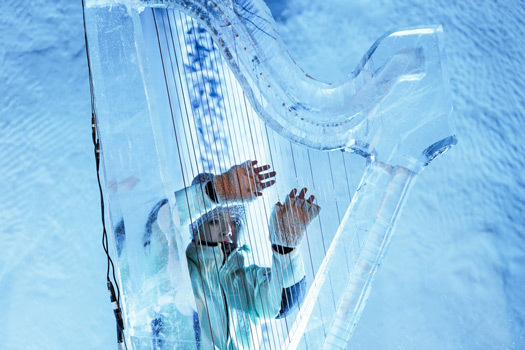 Enjoying the beautiful, natural landscapes of Norway, we cannot ignore the country's oldest cultural monuments. Pole churches are the most characteristic Norwegian structures and the only buildings of this type in Europe. Norwegian culture also means unusual festivities and events, such as the snow sculpture festival held in Vinje. Therefore, when visiting Norway, let's not limit ourselves to the fjords.
Enjoying the beautiful, natural landscapes of Norway, we cannot ignore the country's oldest cultural monuments. Pole churches are the most characteristic Norwegian structures and the only buildings of this type in Europe. Norwegian culture also means unusual festivities and events, such as the snow sculpture festival held in Vinje. Therefore, when visiting Norway, let's not limit ourselves to the fjords.
Norway is a country of the people, who like and can have fun. Maybe that's why so many festivals take place here. The most famous is the Nordlysfestivalen Northern Lights Festival in Tromso. Tourists from all over the world flock here at the end of January, to admire this extraordinary phenomenon. The people of Tromso also celebrate the return of the Sun after long weeks of living in the dark. Also in the extreme north of Svalbard it is a time of great fun and festive celebrations. Snow Sculpture Festival in Vinje, which takes place in mid-February, it also attracts amateurs of fun from all over the country. The city then turns into a huge playground, on which both amateurs, and famous artists create real works of art out of snow.
Norwegian salmon – Undoubtedly, salmon is the most popular delicacy from Norway. It is valued for its delicate flavor and appetizing color. It is grown with respect for the environment, and its meat is a source of easily digestible protein, vitamins, minerals and unsaturated fatty acids essential for life. During the breeding season, salmon migrate from the sea to the river, in which he was born. In this journey he is guided by the scent of water. Remarkable changes take place in his body during this time. When crossing the border between fresh and salt waters, not only the biochemical economy changes drastically, but also the physiology of the fish.
Pillar church – Stave Church is the name of characteristic wooden churches built in Norway from the 10th to the 13th century. They are among the oldest wooden monuments in Europe. These temples were supported on a pole structure, and the steep roof was covered with shingles. This tradition dates back to pre-Christian times and was drawn from the technical solutions used by the Vikings in building boats. Maybe that's why the legends preach, that trolls helped the carpenters to erect the buildings. No metal was used in the construction of the temple – even the nails were wooden. The church was usually decorated with sculptures (ridge tiles in the shape of dragons). Currently in Norway 28 slavkirke type churches. Is estimated, that until the 19th century. were them 1200.
